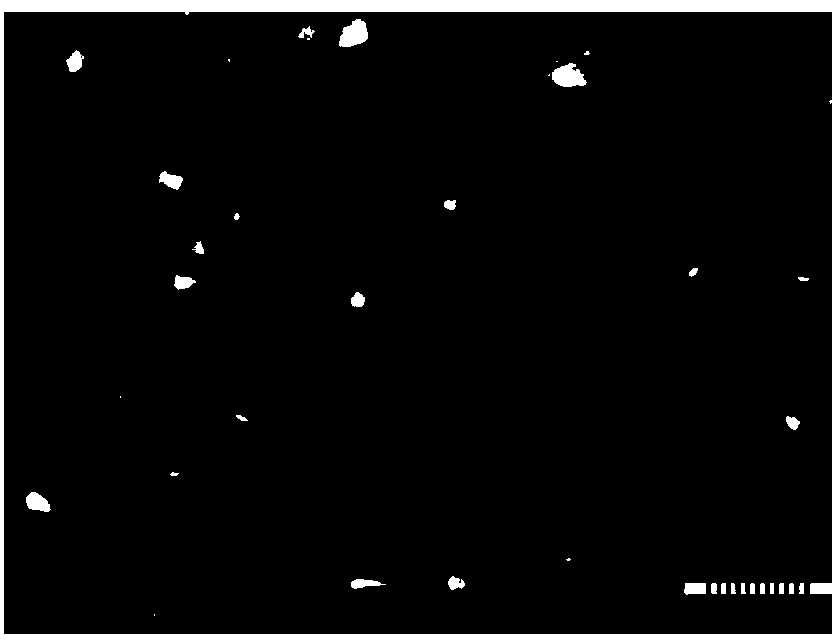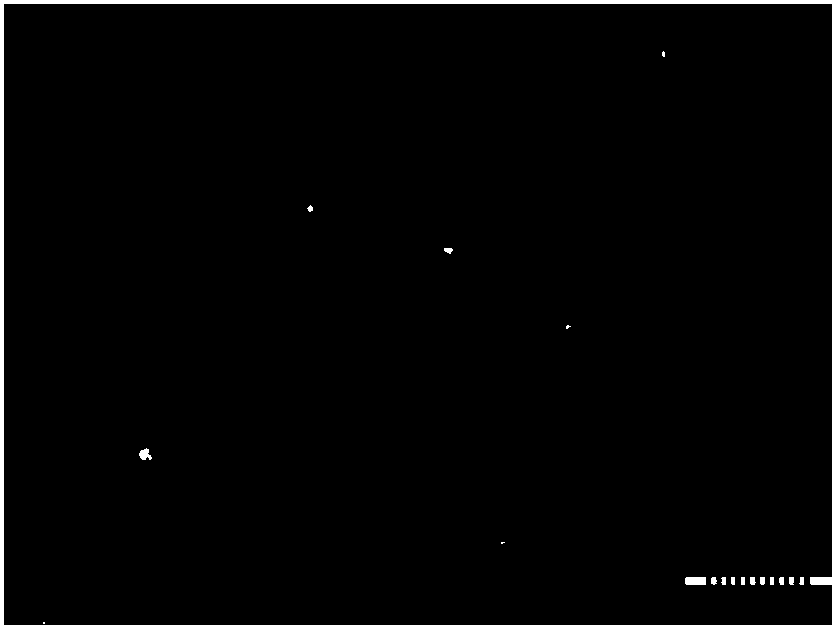Hydrophilia-wrapped water-absorbent resin microsphere and preparation method thereof
A water-absorbent resin and hydrophilic technology, applied in the coating and other directions, can solve the problems of affecting the performance of cement slurry, non-dispersion of water-absorbent resin, etc., and achieve the effects of easy operation, slow water absorption rate, and easy dispersion.
- Summary
- Abstract
- Description
- Claims
- Application Information
AI Technical Summary
Problems solved by technology
Method used
Image
Examples
Embodiment 1
[0026] Use a 100mL volumetric flask to prepare an aqueous solution of acetic acid with a mass concentration of 3%, pour it into a 500mL three-necked bottle, slowly add 1.5g of chitosan powder (deacetylation degree 90%, molecular weight 200,000), stir and dissolve, then add 3g polyacrylamide to absorb water Resin microspheres, stirred for 10min, added 2.5g CaCO 3 , then add 20g of absolute ethanol dropwise, filter out the microspheres, put them into a three-neck flask filled with 60g of toluene (dissolving Span-80 with a mass concentration of 0.5%), place them in a 60°C water bath and stir for 5min, then drop Add 6 g of glutaraldehyde solution with a mass concentration of 12.5%, stir and react for 4 hours, then filter, dry the microspheres in a 50°C incubator, and record the encapsulated microspheres as sample 1.
Embodiment 2
[0028] Use a 100mL volumetric flask to prepare an aqueous acetic acid solution with a mass concentration of 4%, pour it into a 500mL three-necked bottle, slowly add 2g of chitosan powder (deacetylation degree 92%, molecular weight 150,000), stir and dissolve, then add 4.5g polyacrylamide to absorb water Resin microspheres, stirred for 10min, added 3g CaCO 3 , then add 20g of absolute ethanol dropwise, filter out the microspheres, put them into a three-necked bottle filled with 90g of toluene (dissolved with Tween-80 with a mass concentration of 0.6%), place them in a water bath at 65°C and stir for 5min, then drop Add 6 g of glutaraldehyde solution with a mass concentration of 10%, stir and react for 4 hours, then filter, dry the microspheres in a constant temperature oven at 50°C, and record the obtained wrapped microspheres as sample 2.
Embodiment 3
[0030] Use a 100mL volumetric flask to prepare an aqueous acetic acid solution with a mass concentration of 2.0%, pour it into a 500mL three-neck bottle, slowly add 1.5g of chitosan powder (deacetylation degree 90%, molecular weight 200,000), stir and dissolve, then add 3g of polyacrylic acid water-absorbing resin Microspheres, stirred for 10min, added 1g CaCO 3 , and then dropwise added 15g of absolute ethanol, filtered out the microspheres, added them into a three-neck flask filled with 75g of toluene (dissolving Span-60 with a mass concentration of 0.5%), placed them in a 60°C water bath and stirred for 5min, then dropped Add 4 g of glutaraldehyde solution with a mass concentration of 10%, stir and react for 5 hours, then filter, dry the microspheres in a 50°C incubator, and record the encapsulated microspheres as sample 3.
PUM
 Login to view more
Login to view more Abstract
Description
Claims
Application Information
 Login to view more
Login to view more - R&D Engineer
- R&D Manager
- IP Professional
- Industry Leading Data Capabilities
- Powerful AI technology
- Patent DNA Extraction
Browse by: Latest US Patents, China's latest patents, Technical Efficacy Thesaurus, Application Domain, Technology Topic.
© 2024 PatSnap. All rights reserved.Legal|Privacy policy|Modern Slavery Act Transparency Statement|Sitemap



